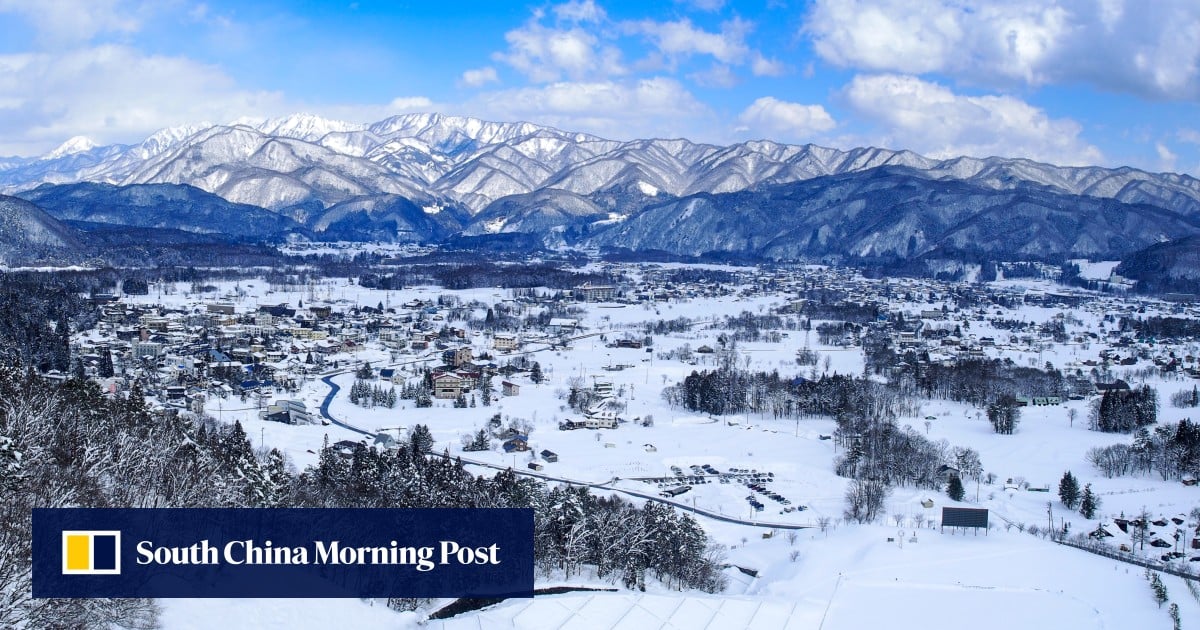As for which mountain town to pick, consult Winter Olympic history: Nagano hosted in 1998, while Sapporo did the honours for the 1972 games.

A hellish ride through the heavens: 4,300km motorbike tour in Tibet
A hellish ride through the heavens: 4,300km motorbike tour in Tibet
The bus terminal is walking distance from Happo-One, the valley’s largest ski resort, and a number of lodging options. Hakuba has a train station on the edge of town, for those coming from somewhere other than Tokyo.
Japan is navigable for visitors who don’t speak or read Japanese – although learning key phrases is always good travel etiquette.
While each of Hakuba’s ski areas operates independently, lift tickets rarely top US$50 per day. Some ski areas even let you pay by the ride.

Hakuba feels like an amalgam of different mountain towns. Train service and jagged peaks remind me of Chamonix, France, where village streets are lined with a global clientele in ski boots. The shabbiness of faded glory is reminiscent of Bariloche, Argentina. And our quiet corner of hotels and chalets, the tree-lined Echoland neighbourhood, feels like a Japanese version of Girdwood, Alaska.
We rent a brand-new, free-standing cabin with its own bathroom, kitchen and laundry for about US$400 per night at Hotel Oak Forest.
Our daily culinary highlight is lunch; resort cafeterias churn out top-notch, affordable food. From ramen to curries to rice bowls with fresh fish, you’d be hard-pressed to spend more than 2,000 yen. On busy days, adorable food trucks pull up to the slopes. At après-ski time, keep your eyes peeled for bars serving Hakuba Brewing Company tipples.
The good, bad and ugly sides to skiing in the French Alps
The good, bad and ugly sides to skiing in the French Alps
Goryu/Hakuba 47, two interconnected resorts, are the second-largest offering after Happo-One and provide a quieter alternative to the Happo scene.
Happo and Goryu have impressive facilities for kids, from indoor play structures made from locally sourced wood to outdoor snow play areas with magic carpets, sledges and snowball makers. Fees vary but typically top out at 1,000 yen.
Further afield, Cortina and Norikura are favoured, if busy, destinations on powder days. Tsugaike caters to beginners, while Iawatake is known for its half-pipe and terrain park.
While 1980s and 90s vintage buildings abound, a revival is clearly under way.

On the train ride into Hakuba, I spy a boarded-up nightclub, a ghost from Japan’s ski boom. However, the music will boom again at the international Snow Machine festival, which takes place in the valley from February 26 to March 2.
Local families who weathered hard times are riding a fresh tourism wave with new upscale hotels such as ski-in, ski-out Starry. Japanese outdoors brand Snow Peak inaugurated a landmark in 2020 with Land Station, a store, restaurant, lodge and campsite designed by top architect Kengo Kuma. (Japanese outdoors brand Montbell also operates a shop upstairs from the Happo Bus Terminal.)
In November, American sporting goods and outdoor recreation retailer Evo announced it had bought a 21-room hotel that will soon get a makeover. That move comes on the heels of Evo’s 2022 acquisition of Rhythm Japan, a ski and board shop providing Hakuba’s best rentals.
All of which seems to be welcome news for Hakuba residents, who elected a young hospitality professional, Toshiro Maruyama, as mayor in 2023. As he told Hakuba Connect magazine, “After the 1998 Nagano Olympics, the economy collapsed and Hakuba took a sharp decline …
“When the tourism industry is strengthened, Hakuba as a whole benefits.”

Where else can you ski in Japan?
Japan has more than 450 ski areas, but only a handful are worth the long journey. Besides Hakuba, here are a few of the top destinations:
The 10 best ski resorts in the world for every skier, and the most snow-sure
The 10 best ski resorts in the world for every skier, and the most snow-sure
A progressive side-country policy makes Niseko the island’s top lift-served destination, and when the sun comes out, neighbouring stratovolcano Mount Yotei is a work of art.
Furano: The actual ski area is modest and the town is adorable, with more ryokan (traditional Japanese inns) than large ski hotels. Deep in the heart of Hokkaido cow country, expect cheese, ice cream and other dairy delights. But then there’s the view, with volcanoes rising across the valley. Tour operators offer snowshoe trips to backcountry onsen (hot springs).
Beyond the ski slopes: why the wealthy have eyes on Hokkaido
Beyond the ski slopes: why the wealthy have eyes on Hokkaido
Asahidake: The volcanoes you see from Furano? That’s Daisetsuzan National Park, Hokkaido’s wildest corner.
One lonely road dead-ends at the Asahidake Ropeway, a single cable car serving two mellow runs. But if the weather clears, an entire alpine playground presents itself for backcountry skiers.
Down in the valley, there are only a dozen-odd ryokans with onsen.

